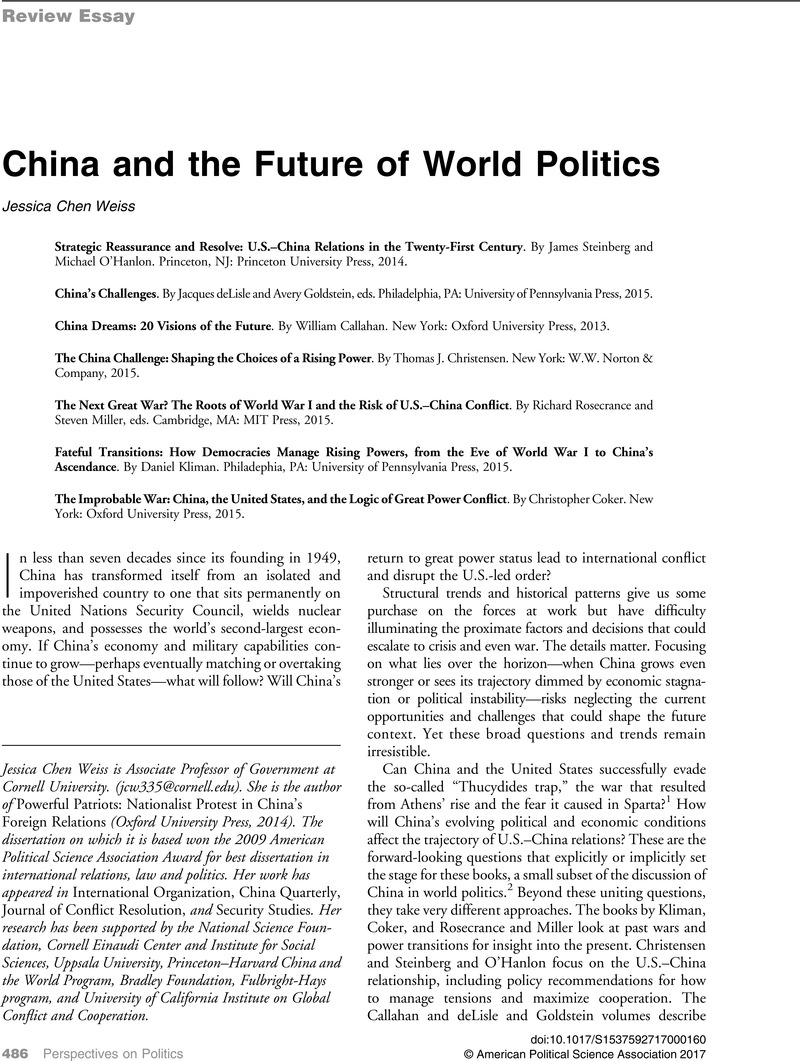Crossref Citations
This article has been cited by the following publications. This list is generated based on data provided by Crossref.
Mastro, Oriana Skylar
2019.
In the Shadow of the Thucydides Trap: International Relations Theory and the Prospects for Peace in U.S.-China Relations.
Journal of Chinese Political Science,
Vol. 24,
Issue. 1,
p.
25.
Nelipa, Dmytro
Batrymenko, Oleh
Yakovlev, Denys
Turenko, Vitalii
and
Perepelytsia, Nataliia
2022.
Principles of organization and efficiency of China’s Political System in modern conditions.
Revista de la Universidad del Zulia,
Vol. 13,
Issue. 38,
p.
275.
Melamed, Avishai
Rao, Adi
de Rohan Willner, Olaf
and
Kreps, Sarah
2024.
Going to outer space with new space: The rise and consequences of evolving public-private partnerships.
Space Policy,
Vol. 68,
Issue. ,
p.
101626.



